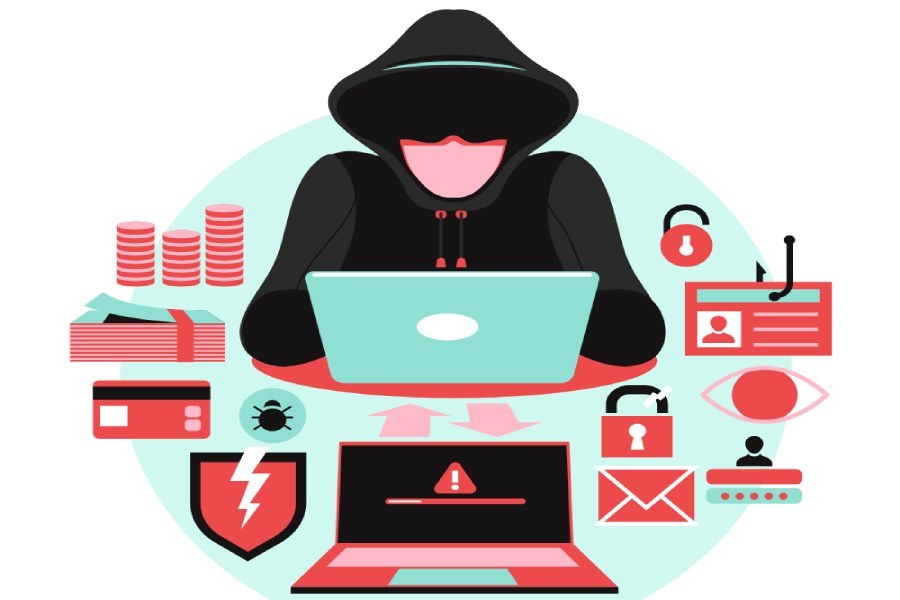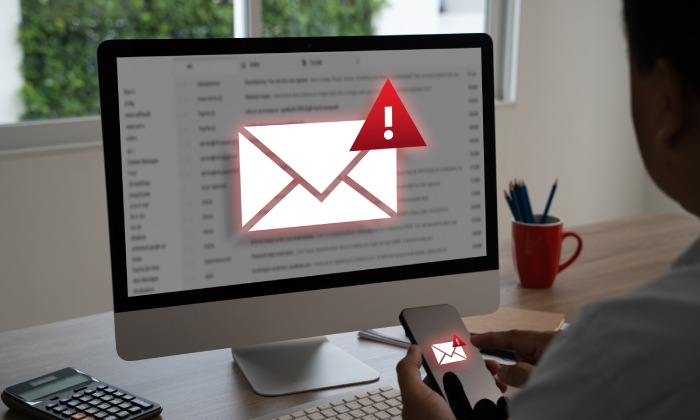To counter phishing, we must first answer the question, “What is phishing?” It is essential that we know what we’re up against. By knowing what phishing is in detail and using anti-phishing tools and anti-phishing services, we can counter the actions of adversaries.
We can easily understand the meaning of phishing by considering the idea of a Trojan horse. Phishing is a technique whereby attackers exploit the trust of users to make them perform activities which compromise the security of their information. Phishing emails are the most common and successful transmitting agents used by cyber-criminals to target a specific enterprise or organization. Cyber attackers are also using a wide variety of new tricks and software available on the darknet to victimize unsuspecting users to steal millions of their hard-earned money.
Phishing is a criminal activity where scammers send deceptive emails to unsuspecting victims who open them and end up becoming compromised. These emails contain powerful malicious attachments such as ransomware, which can lock down files on your device with military-grade encryption and even delete them until you pay a ransom in untraceable bitcoins. Phishing emails also work by taking the user to a malicious website to steal the target’s sensitive data. The hacker can even deploy some malware through these phishing emails in the system of the targeted user. Phishing causes loss of several hundred million dollars to enterprises every year.
So, to safeguard your business organization from such a devastating cyber attack, here are some countermeasures
Never Click On Suspicious Emails As They Are the Vectors of Phishing
One of the most common mistakes made by employees is that they click on malicious emails which attackers ingeniously disguise to look as if coming from a trusted source. These phishing emails then install malware on their devices, which results in the loss of sensitive corporate data.
So, to safeguard the organization from such risks, here are some points that an employee should be aware of:
- Be wary of emails that ask for personal information, passwords, details relating to your bank account and the like, etc.
- If there are some grammatical errors in the emails, then there are chances that the email is a malicious one.
- When you are opening a site using an email-given link, you can long-press the link in the email, and you’ll see the website’s URL to which you are being directed.
- You can then open that link if you are sure that the URL is reliable or authorized and not fraudulent.
- In case you are using your PC, move the cursor over the link to know the URL and decide whether it is authentic or not.
Checking The Authenticity Of Email
One of the ways to verify the authenticity of an email is through DMARC, i.e., Domain-based Message Authentication, Reporting, and Conformance. It is a countermeasure through which one can put a stop on the deceitful communications initiated by way of phishing emails. The message prompting on your computer screen might look authentic, but it can be malicious, and DMARC detects such unauthentic content.
Set Strong Encrypted Passwords To Protect Against Phishing
In case of a security breach through a phishing email, hackers first target databases related to passwords, which are often in an easily readable plain text file as is the case in an accessible cloud-based Google Drive storage. Hence, it is advisable to always secure your database through strong encryption like hashing or salt + hash and safeguard the user passwords. You can also use one of many open-source password generation tools which can create robust random passwords for sites that you visit. You’ll need to remember just one master password – a long string of easily memorizable words is advisable – and the password generator will create and store the encrypted passwords for you. It can also synchronize passwords across devices.
Using Anti-Phishing Toolbars
Many modern browsers come with pre-installed anti-phishing toolbars which make a comparative check on the websites you are visiting against those websites which are in a black-list of phishing websites. The browser generates an alert in case scammers are directing you towards a malicious website.
Setting up Sender Policy Framework (SPF)
Many enterprises often invest a significant portion of their security budget in safeguarding their valuable data from cyber adversaries who are always trying to gain access to their network systems. They set up expensive security control measures, firewalls, and hire in-demand cybersecurity professionals.
They establish advanced technical security control measures such as a Sender Policy Framework (SPF) to protect themselves from various phishing attacks. Tools like SPF is a powerful way to counter phishing emails and spam messages. It uses different techniques to authenticate intra-organization emails as genuine and can unearth fraudulent email addresses which try to send malicious content to enterprise’s employees deceptively.
Installing Firewalls
Installing a desktop firewall as well as a network firewall can act as a protective barrier between your PC and the adversaries. When you pair both of these options, the combination is an ideal countermeasure against the malicious activities of hackers.
Anti-Phishing Antivirus Software
Antivirus software can prove to be very helpful when it comes to phishing emails:
- Digital signatures are a part of antivirus software, which safeguards against some known technological drawbacks and inefficiencies.
- Anti-malware, as well as firewall options of an antivirus, can be used to block malicious files and malware.
- Updating the antivirus software from time to time is imperative in countering new cyber scams.
Update The Browser For New Security Patches
The manufacturers of web browsers update new security patches from time to time to cover security deficiencies which cybercriminals can exploit. It is thus advisable to update your browser software as soon as you get a message for its availability or a new security patch installation.
Conclusion
Phishing is a severe threat and can cause loss of brand image to a company. Getting an enterprise’s name associated with poor security can even lead to boycott from customers. This lack can spell doom for an organization’s future. All of this is easily avoidable by taking the correct security posture and being aware of threats.
Most of these email security services are readily available and are very affordable, but ignoring them would be like being penny-wise and pound-foolish. By using anti-phishing services, you can be sure that you will be safe from these malicious attacks.


